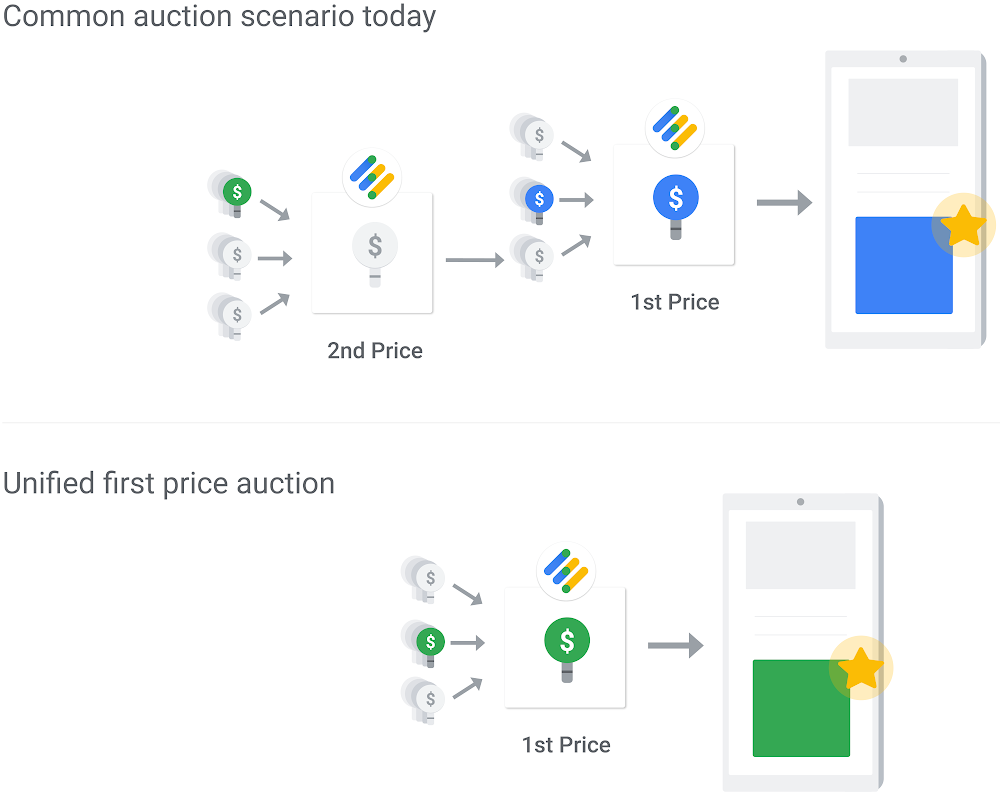Google has been testing what are called “first-price auctions” across 10% of their Google Ad Manager inventory over the past few months. And now, they are announcing that all of their programmatic will shift over to first-price auctions over the next few weeks starting on September 10th. The question is for ad buyers, what does this mean and what should we expect?
First, let’s clarify the difference between second-price auctions, what Google currently uses, and first-price auctions.
Second-Price Auction: The winner of the auction pays what the second highest bidder offered + $.01.
First-Price Auction: The winner pays exactly what they bid.

So for example, in the old system if the top bidder placed a bid of $2.50, and the second highest bidder bid $2.00, the top bidder would only end up paying $2.01. In the new system, since you pay what you bid, the winner would pay the full $2.50.
The goal of this is to create a more fair and stable environment for both ad buyers and publishers. This removes the ‘last look advantage’ where whoever is bidding last can simply one-up the current top bidder by one cent and win the auction. It also provides more consistency when bidding, since ad buyers will know exactly how much each winning bid will cost them, greatly reducing the current volatility.
This may also help to counteract the ever increasing ‘ad inflation’ we’ve seen over the years. Many believe ad prices may go down overall since ad buyers will have to be more conservative with what they bid.
How will this impact ad sellers? Sam Cox, Google Ads product manager, stated that “publishers and app developers will need to rethink how they use price floors.” Price floors are must for publishers in the current system because without them ad buyers could end up winning auctions for pennies on the dollar, which obviously the seller doesn’t want. However with this new system floor pricing strategies may have to change.
Overall, Google’s goal is to reduce the complexity of their programmatic auction process in a way that both helps ad buyers and sellers. They plan to have their entire ad inventory switched over by the end of the year.
Source: Google Blog




